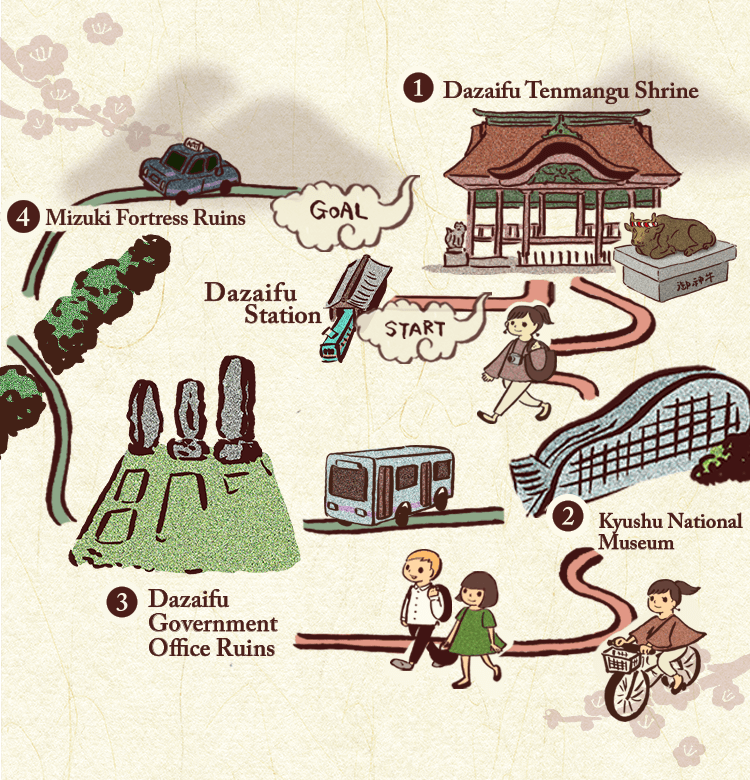
With this tour, you’ll delve deeper into Dazaifu’s past as Japan’s western capital. First, you’ll spend time exploring iconic Tenmangu Shrine. Then you’ll head to the impressive Kyushu National Museum for an overview of Dazaifu’s history and its cultural ties to the continent. Next, you’ll make your way to the Dazaifu Government Office Ruins for a sense of the former capital's grandeur. Finally, you’ll spend time walking the ruins of Mizuki Fortress, the main fortification through which all visitors passed.
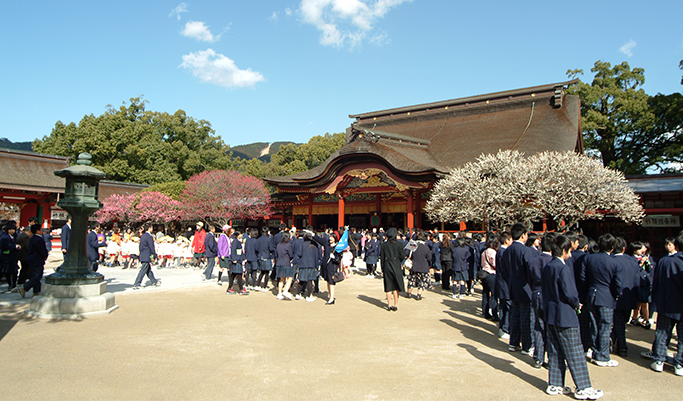
Dazaifu Tenmangu Shrine was founded in the 10th century. The Shinto god worshiped here is known as Tenjin, a deification of the 9th century poet-scholar and politician Michizane Sugawara.
The shrine has a history of more than 1,100 years and its current main hall, an architectural work of art, dates to the late 16th century. A fine example of Momoyama-period architecture, the structure has been designated a nationally important cultural property.
At first, Tenjin was worshiped to ward off disaster. By the 1700s, he was recognized as the god of scholarship. Today, students and parents visit the shrine to pray, especially at exam time.
While walking the grounds, stop by Tenmangu’s impressive
treasure house. Exhibits display works of exceptional cultural value such as ancient
swords and historical documents, including the Kan’en, a 10th century encyclopedia
which is a national treasure. Documents penned by Sugawara are also on display.
The
next stop on the tour, the Kyushu National Museum, is on the far side of the
compound.
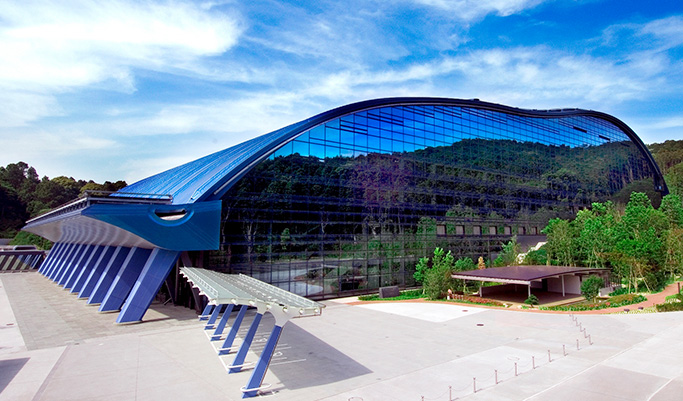
The Kyushu National Museum is a top museum with engaging exhibits explaining Dazaifu’s heritage as Asia’s gateway to Japan from the 7th to 12th centuries. The museum’s modernist glass structure makes an interesting contrast with the rest of historic Dazaifu. It houses numerous works of important cultural value, including national treasures, ceramics, sculptures, Buddhist art, landscape paintings, and manuscripts.
Informative and interactive, the exhibits make it easy
to understand how international exchange has shaped Japanese culture over the
centuries. Don’t miss one of the regular screenings at the Super High Definition
Theatre on the fourth floor.
Children will enjoy the colorful displays,
interactive exhibits and arts and crafts activities in the free play-based learning
space on the first floor.
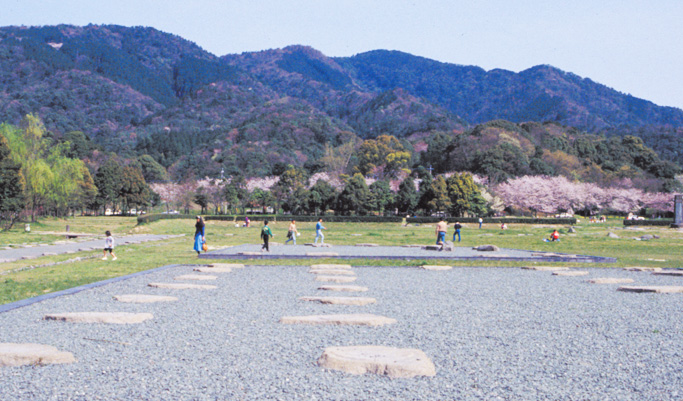
This ancient site, now a public park, is where the official administrative structures of early Dazaifu once stood. Dazaifu was the seat of imperial power and the center of politics and culture in Kyushu from the late 7th to 12th centuries. It was also at the frontier of Japanese diplomacy and defense, and maintained economic ties to the Korean Peninsula and Asian continent. The whole complex was destroyed during a battle in 941, but was rebuilt and remained active until the late 11th century.
Visiting the site will give you a sense for how the ancient capital was laid out many centuries ago.
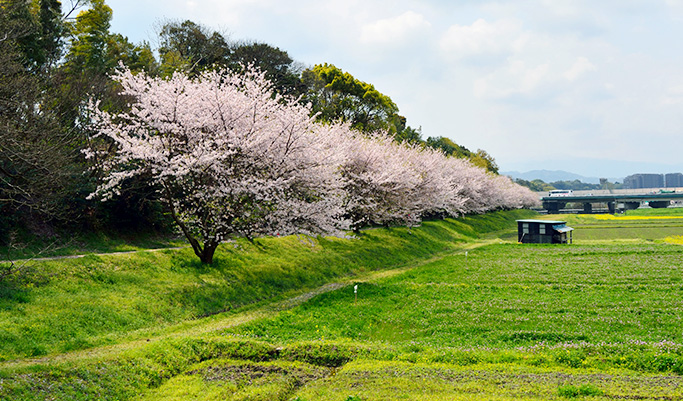
Stretching across northwestern Dazaifu, the Mizuki Fortress Ruins once protected this area from attacks from the Korean Peninsula and Asian continent in the year 664. The administrative capital of Dazaifu was founded following the construction of the fortress in 664.
The fortress consisted of a 9-meter wall and a 60-meter wide moat, and extended several kilometers. Although diminished in height, several large wooded sections of the earthen bulwark remain and can be explored.